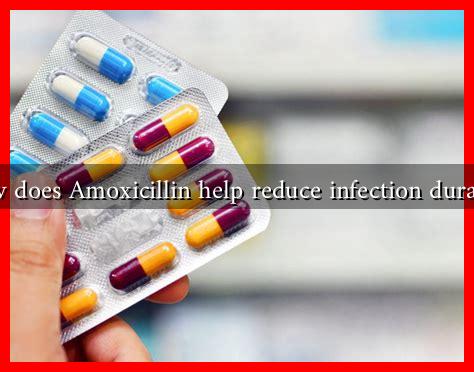-
Table of Contents
How Does Amoxicillin Help Reduce Infection Duration?
Amoxicillin is a widely used antibiotic that belongs to the penicillin group of drugs. It is effective against a variety of bacterial infections, making it a common choice for treating conditions such as pneumonia, bronchitis, and infections of the ear, nose, and throat. This article explores how Amoxicillin helps reduce the duration of infections, its mechanism of action, and its effectiveness in various clinical scenarios.
Understanding Amoxicillin
Amoxicillin is a semi-synthetic derivative of penicillin, designed to enhance its effectiveness against a broader range of bacteria. It works by inhibiting the synthesis of bacterial cell walls, leading to cell lysis and death. This mechanism is particularly effective against gram-positive bacteria and some gram-negative bacteria.
Mechanism of Action
The effectiveness of Amoxicillin in reducing infection duration can be attributed to its specific mechanism of action:
- Inhibition of Cell Wall Synthesis: Amoxicillin binds to penicillin-binding proteins (PBPs) located inside the bacterial cell wall. This binding inhibits the cross-linking of peptidoglycan layers, which are essential for maintaining the structural integrity of the bacterial cell wall.
- Bactericidal Effect: By disrupting cell wall synthesis, Amoxicillin causes bacteria to become osmotically unstable, leading to cell lysis and death. This rapid action helps to clear the infection more quickly.
- Broad Spectrum of Activity: Amoxicillin is effective against a wide range of bacteria, including Streptococcus pneumoniae and Haemophilus influenzae, which are common culprits in respiratory infections.
Clinical Evidence Supporting Amoxicillin’s Efficacy
Numerous studies have demonstrated the effectiveness of Amoxicillin in reducing the duration of infections:
- Acute Otitis Media: A study published in the journal Pediatrics found that children treated with Amoxicillin for acute otitis media experienced a significant reduction in symptoms and a shorter duration of illness compared to those receiving placebo.
- Community-Acquired Pneumonia: Research in the American Journal of Respiratory and Critical Care Medicine indicated that patients with community-acquired pneumonia treated with Amoxicillin had a faster resolution of symptoms and a shorter hospital stay than those treated with other antibiotics.
- Streptococcal Pharyngitis: A meta-analysis in the British Medical Journal showed that Amoxicillin effectively reduced the duration of symptoms in patients with streptococcal throat infections, leading to quicker recovery times.
Dosage and Administration
The dosage of Amoxicillin can vary based on the type and severity of the infection, as well as the patient’s age and weight. Common dosages include:
- Adults: 500 mg every 8 hours or 875 mg every 12 hours.
- Children: 20-40 mg/kg/day divided into two or three doses, depending on the severity of the infection.
It is crucial for patients to complete the full course of Amoxicillin as prescribed, even if symptoms improve before finishing the medication. This practice helps prevent antibiotic resistance and ensures the complete eradication of the infection.
Potential Side Effects and Considerations
While Amoxicillin is generally well-tolerated, it can cause side effects in some individuals, including:
- Gastrointestinal disturbances (nausea, vomiting, diarrhea)
- Allergic reactions (rash, itching, anaphylaxis in severe cases)
- Superinfection due to disruption of normal flora
Patients should consult their healthcare provider if they experience any adverse effects or if symptoms do not improve within a few days of starting treatment.
Conclusion
Amoxicillin plays a vital role in reducing the duration of bacterial infections through its bactericidal action and broad spectrum of activity. Clinical evidence supports its effectiveness in treating various infections, leading to quicker recovery times and improved patient outcomes. However, it is essential for patients to use this antibiotic responsibly to minimize the risk of resistance and ensure its continued efficacy. For more information on antibiotics and their use, you can visit the CDC’s Antibiotic Use page.

